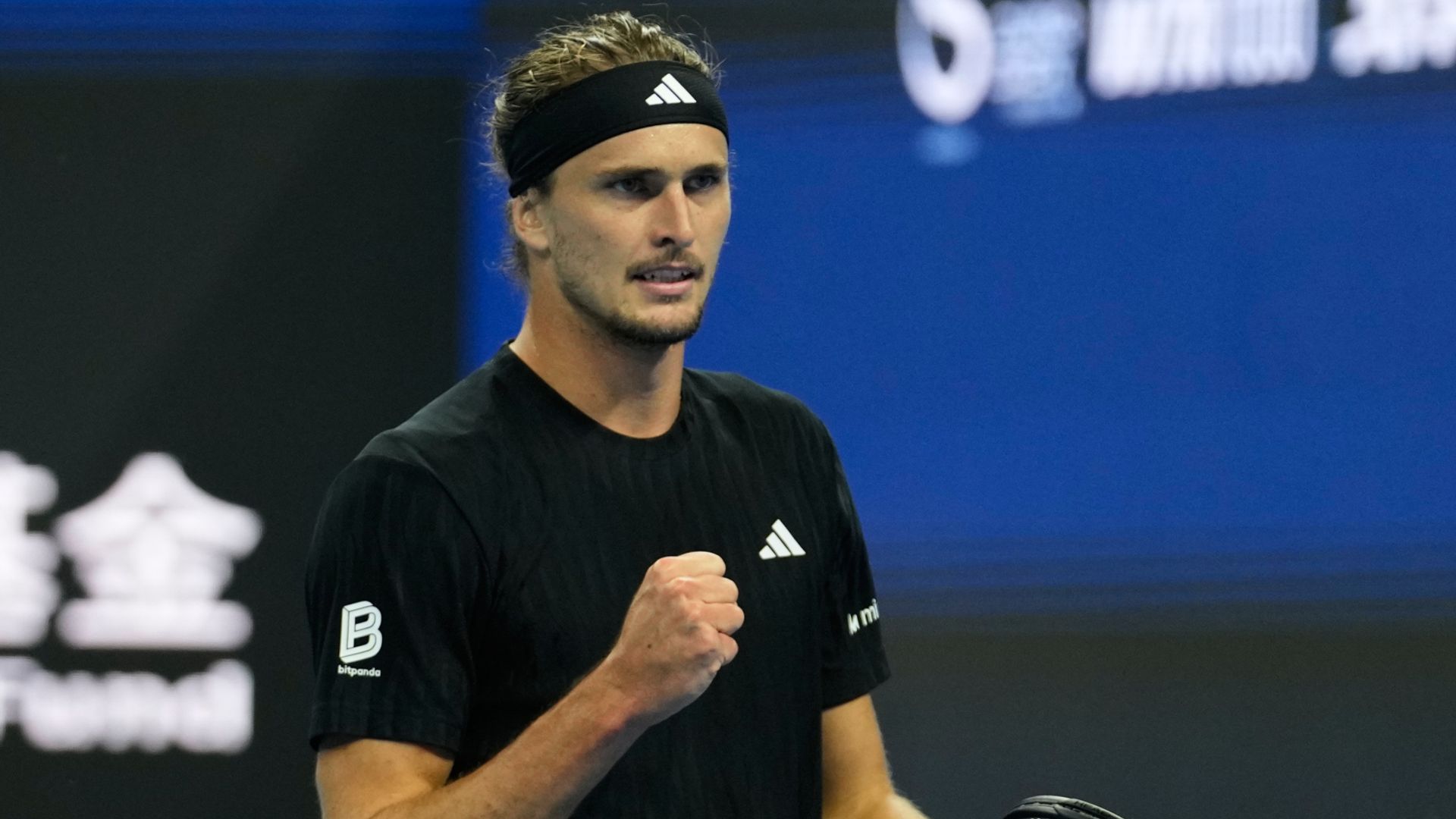In a recent statement, Alexander Zverev expressed concerns over what he perceives as favoritism towards the top two players in men’s tennis, Carlos Alcaraz and Jannik Sinner. Following his victory against Valentin Royer at the Shanghai Masters, Zverev criticized tournament organizers for intentionally slowing down court surfaces to benefit these players.
Zverev, currently ranked No. 3 in the world, won the match with a score of 6-4, 6-4. Despite an on-court injury scare related to his toe, which required treatment while serving for the match, he managed to complete the encounter without further complications. In his post-match interview, Zverev voiced his dissatisfaction with the direction of the sport, stating, “I hate when it’s the same, to be honest. I think the tournament directors are going towards that direction because, obviously, they want Jannik and Carlos to do well every tournament and that’s what they prefer.”
The German player emphasized the need for variety in tennis, arguing, “Nowadays, you can play almost the same way on every surface. I don’t like it, I’m not a fan of it. Tennis needs different game styles, tennis needs a little bit of variety, and I think we’re lacking that right now.”
Zverev’s remarks echo sentiments previously expressed by other players. Roger Federer, during a podcast appearance in September, also criticized the tendency of organizers to standardize court speeds, suggesting that it diminishes the challenge for players like Alcaraz and Sinner. “We need to have not only fast courts, but what we would want to see is Alcaraz or Sinner figure it out on lightning fast courts and then have the same match on super slow courts and see how that matches up,” he commented.
Similarly, Nick Kyrgios has advocated for more diverse playing conditions in past seasons. He remarked, “I’d like to see more variety. It’s good to play on [fast] courts like these, where aggressive tennis gets rewarded a little bit more.”
Prior to the 2024 US Open, Stacey Allaster, the tournament director, provided insight into the court speeds at Flushing Meadows, stating, “We aim for the court pace rating to be medium fast.” This rating varies between 41-44, with the average court pace index (CPI) being 42. According to Allaster, maintaining a consistent court speed is crucial for balancing styles of play throughout the tournament.
Notably, the court speed at the Shanghai Masters has seen a significant decrease, with reports indicating a drop in its CPI from the 40-41 range in previous years to 32.9 in 2025. This change has resulted in noticeably slower playing conditions, which Zverev and others suggest may not be conducive to the sport’s evolution.
In other matches at the Shanghai Masters, British No. 2 Cameron Norrie advanced to the third round after edging out Arthur Cazaux with a score of 6-3, 0-6, 7-6 (7-5). Alex de Minaur, ranked No. 7, defeated Argentinian player Camilo Ugo Carabelli 6-4, 6-2 in a match lasting 88 minutes. Meanwhile, Stefanos Tsitsipas withdrew from his scheduled match against Czech qualifier Dalibor Svrcina due to a leg injury.
As the tournament progresses, the debate over court conditions and their impact on player performance continues to resonate within the tennis community. The implications of these changes could shape the competitive landscape as players adapt to evolving playing conditions.
